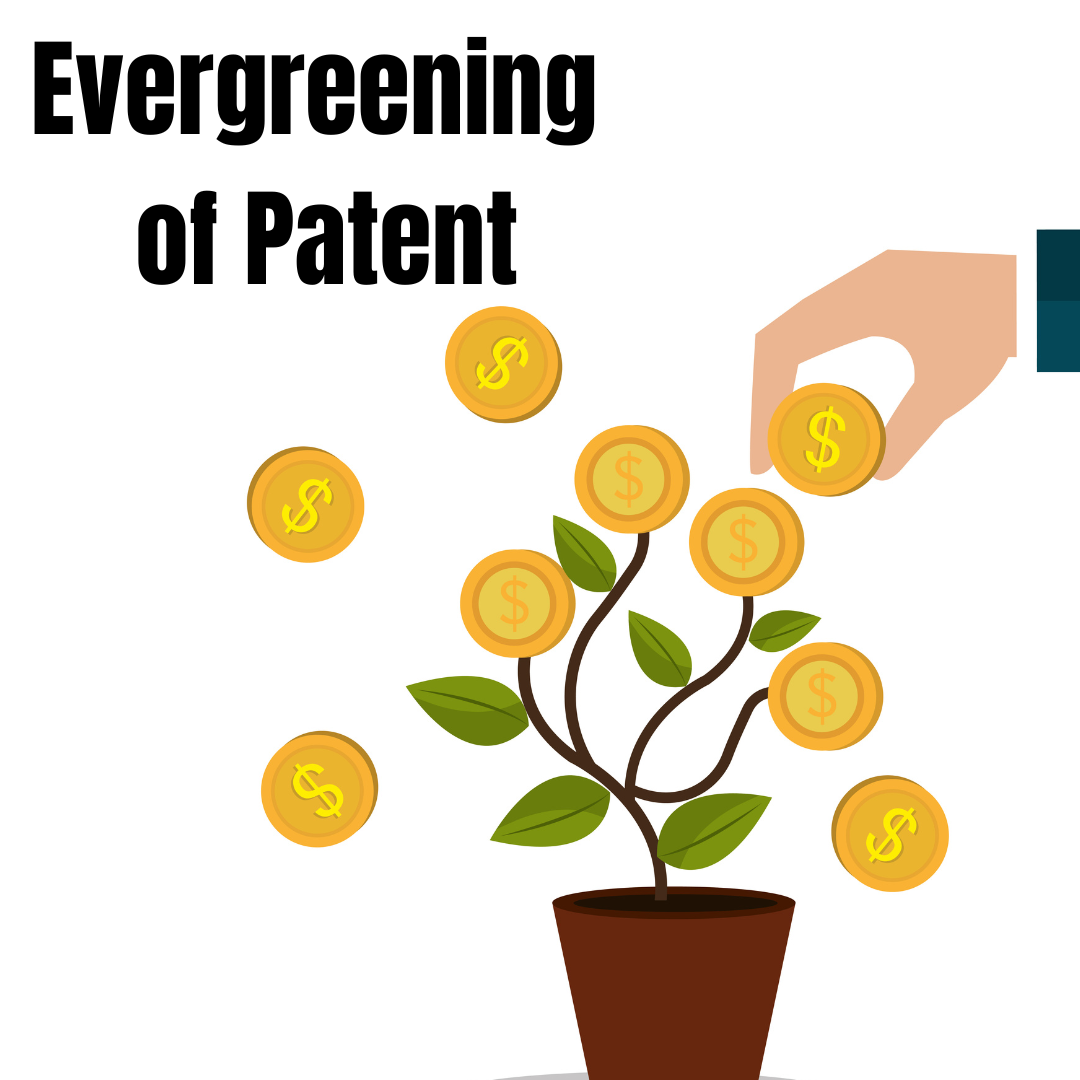
Introduction
Do you know that there’s a way to evergreen your Patents ? Evergreen, as the name suggests, is something that will last for a lifetime. Therefore, Evergreening of patents is a process by which patent holders can extend the life of their patents and maximize their profits. “Patent evergreening” is the strategy of getting multiple patents that cover different parts of the same product. Even though any industry can get a patent for an improvement through the patent system, it is said that evergreening is most common in the pharmaceutical industry. It works by filing additional patents related to the original patent, allowing them to protect their invention from competitors for longer periods of time. In this blog, we will discuss what evergreening is, how it works, its benefits and drawbacks, and examples of evergreening patents.
How Does Evergreening Work?
Evergreening works by filing additional patents related to the original patent. This allows patent holders to extend the life of their inventions and protect them from competitors for longer periods of time. The process typically involves filing multiple follow-up patents that build off of the original patent in order to provide further protection for the invention. The goal is usually to ensure that there are no loopholes that competitors can use to bypass the original patent and create a competing product or service without infringing on it.
In India, patents are given out for 20 years after annual fees are paid. Once the patent period for an invention is over, it goes into the public domain, which means that any company, firm, or person can make, sell, or import it. But sometimes the patent holders, which are usually pharmaceutical companies, try to keep their monopoly on the invention even after the patent expires. They do this by filing a new patent on minor modifications to the original invention so that no other company can make or sell the invention.
Benefits of Evergreening Patents
Extended life of patents: It provides increased protection for inventions over an extended period of time. This is especially beneficial for companies who have invested heavily in research and development and want to protect their investments from competitors as long as possible.
Maintain profitability: Evergreening can also help companies maintain market share by preventing competitors from entering the market with similar products or services.
Lawful protection: Evergreening can also provide other legal benefits such as increased damages in infringement cases or a decrease in licensing fees due to increased protection.
The Novartis case: Why does the Indian judiciary discourage the evergreening of patents?
The recent ruling by India’s supreme court on the Novartis case has brought attention to the issue of evergreening of patents. Novartis, a Swiss drug company, sought to obtain a patent for a new version of its cancer drug Gleevec, claiming that it was more effective in fighting leukemia. However, India’s patent law, specifically Section 3(d) of the Patents Act of 1970, prohibits evergreening by preventing the grant of patents for minor modifications of existing patents.
Novartis challenged the validity of Section 3(d) in court, arguing that it breached international agreements such as the TRIPS (Trade-Related Aspects of Intellectual Property Rights) agreement and Article 14 of the Indian Constitution. The case went through various stages, including the Madras High Court and the Intellectual Property Appellate Board, before reaching the Supreme Court of India. The two-judge bench of the Supreme Court rejected Novartis’ appeal, stating that there was no proven newness in their patent application after a thorough comparison with the existing patent, and thus no new patent could be granted to prevent evergreening.
Further
The Supreme Court’s ruling has been hailed as a godsend for individuals who cannot afford life-saving treatments due to exorbitant costs charged by pharmaceutical companies. Evergreening allows existing patent holders to make minor changes to their patented drugs and claim them as new inventions, thus extending their market monopoly. This practice is often seen as a way to avoid investing in expensive research and development (R&D) for genuinely new drugs after the patent expires. R&D for existing drugs costs significantly less, around 10% of the expense required for developing a completely new drug. However, this approach also carries risks, as seen with recent failures in clinical trials of new drugs, such as with COVID-19 vaccinations.
The Supreme Court’s ruling against the evergreening of patents is a significant step in preventing the abuse of patent monopolies and promoting genuine innovation in the pharmaceutical industry. It upholds the intent of the Patent Law of 1970, which aims to ensure that patents are granted only for truly novel and non-obvious inventions, and not for minor tweaks to existing patented products. This decision has far-reaching implications, as it helps protect access to affordable medicines for those in need, encourages genuine innovation, and safeguards the public interest in the field of healthcare.
Drawbacks of Evergreening Patents
Expensive procedure: Evergreening can be an expensive process since each additional patent requires significant legal fees and research costs.
Promotes unfair competition: Filing too many follow-up patents may lead to overcrowded markets which can make it difficult for new entrants into a particular area or industry since they will have difficulty competing with established players who have secured numerous patents on various aspects of a product or service they offer. overly broad interpretations of existing patents may lead to litigation if a company’s competitor feels that they are infringing on their intellectual property rights even though they are not technically breaking any laws or regulations.
Costly Litigation: Evergreening patents can lead to lengthy and costly legal battles between patent holders and competitors. These legal disputes can drain resources and divert funds away from research and development.
Monopolistic Practices: Evergreening patents can create monopolies, where a single company has exclusive control over the production and sale of a product. This can lead to high prices, reduced competition, and limited consumer choice.
Examples Of Evergreening Of Patents
Apple Inc. regularly files multiple follow-up patents related to its core products such as iPhones and iPads in order to extend the life of those products’ intellectual property protections over an extended period of time. Another example would be Microsoft Corporation’s use of “patent thickets” which involve filing numerous different types of related patents including design patents, utility patents, trade dress applications, etc., in order to maximize its legal protections against potential infringers while simultaneously creating barriers for others who might want to enter into its market space with similar products or services.
Conclusion
In conclusion, evergreening is an effective way for companies to extend the lifespan of their inventions through the strategic use of additional follow-up patents while simultaneously protecting themselves from potential infringers over an extended period of time. However, it should be noted that this process comes with both advantages and disadvantages which need to be carefully weighed before embarking upon such a strategy in order to minimize potential risks while maximizing potential rewards at the same time. Ultimately though, when used appropriately, evergreening can be an effective way for companies looking for maximum legal protection for their inventions over an extended period of time without having to worry about competition entering into their markets too quickly or easily due to any loopholes found within existing IP laws or regulations governing such matters.
We at Photon Legal are a team of experienced attorneys who can provide assistance with patent applications, trademark registrations, and other aspects of intellectual property law. Contact us today to learn more about how we can help protect your innovations and turn them into valuable assets for your business.


